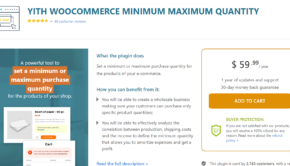The Top 5 Ways Web Designers Should Price Their Products and Services
A website isn’t a tangible product that requires physical supplies to create, nor is there such thing as a “one size fits all” website. This makes pricing correctly a tricky task for many web designers, particularly freelancers and newcomers. Overpricing will alienate potential clients, and underpricing is selling yourself short – both literally and figuratively. Considering the basics will help you develop an accurate pricing formula that you can use for any job.
- By Taking a Thorough Inventory of What a Project Involves
A fifteen page website isn’t just a fifteen page website. Does the client expect you to provide all of the content, or do they have a separate copywriter for that part of the project? Some websites are legally required to be ADA compliant, and part of your job as the web designer is to create the site to these specifications. If you need to pay someone to write content, this cost needs to be passed on to the client. Any programming or scripts you’ll have to create will require a lot more work. Break a request down into individual aspects when you’re preparing a quote, and make sure the client has a thorough understanding of the complexities required to make their idea come to fruition.
- By Treating Special Requests Differently
If a client needs a website created in an especially short period of time and they’re requesting that you expedite it, this means your other clients will have to wait longer. You won’t be able to devote all of your time and energy to everything at once, so you’ll be losing out on other money by rushing this client to the front of the line. Can you actually afford to do that within the client’s proposed budget? Consider charging these clients a premium, because they’re potentially reducing your payday.
- By Counting Your Experience
Everyone learns from experience. Would you be more comfortable having an operation with a surgeon who is a recent med school grad, or a surgeon who has been working in his field for five years? As an experienced web designer, you’re more than likely able to do things a lot more efficiently than a newbie. You’ve got a better understanding, and your mental database is full of the outcomes of all kinds of trial and error. More experience means you can command a higher rate.
- By Comparing Rates with Similar Designers
Clients won’t go to you if a designer with similar credentials charges 20% less for the exact same job. If they’re just as capable as you are, why would they pay you more? Maybe you’re the web designer that’s charging 20% less, and you’ve just discovered that clients are willing to pay more for the work that you do. Network with other designers and figure out what they charge. A little research will give you a better idea regarding what a reasonable ballpark would be.
- By Determining How Much Your Time is Worth
Whether a job is paid hourly or under a fixed price contract, you’re still selling hours of your time. Start keeping track of how many hours it takes you to actively complete projects. At the conclusion of a job, deduct your self-employment taxes from your earnings. Divide that by the amount of hours you spent working on the design project. If you only make $8 an hour after taxes, you have to determine whether or not that’s a feasible living wage. Remember that you should be able to keep some money in savings and take a few days off every now and then.
It’s important to remember that web design is a real job. It doesn’t matter where you work from or what kind of websites you create. You’re in control of every aspect of your own personal business, and nobody else is going to handle the finances for you. It’s a lot of work, and at the end of the month, you need to be able to pay your bills. Your rates should reflect that.
Author’s Bio:
Susanne Loxton is a modern technology enthusiast who combines her interest in all things new with a passion for writing. On a daily basis, Susanne works for Aubiz, a compendium of knowledge about companies in her native Australia. Follow her on Twitter @LoxtonSusanne















